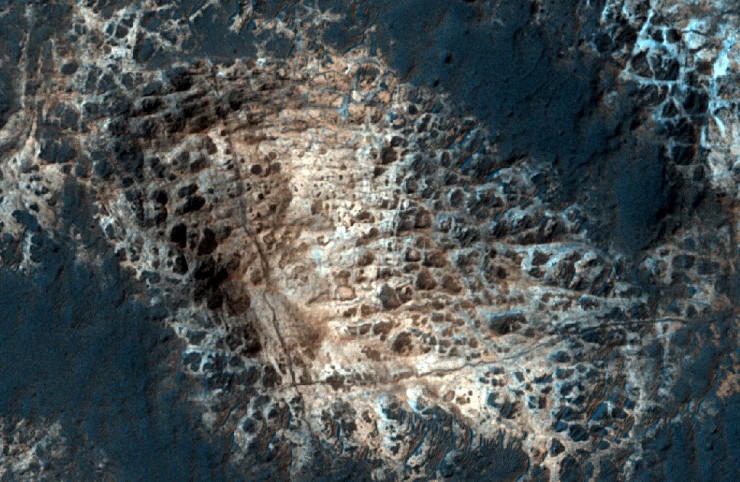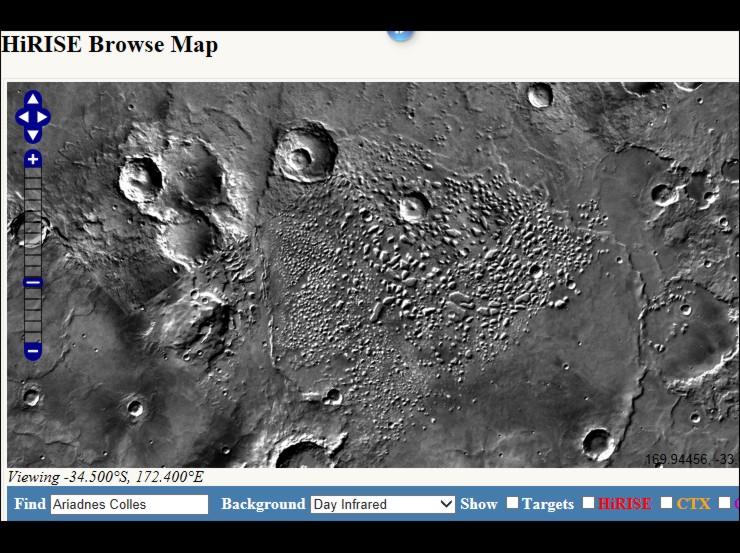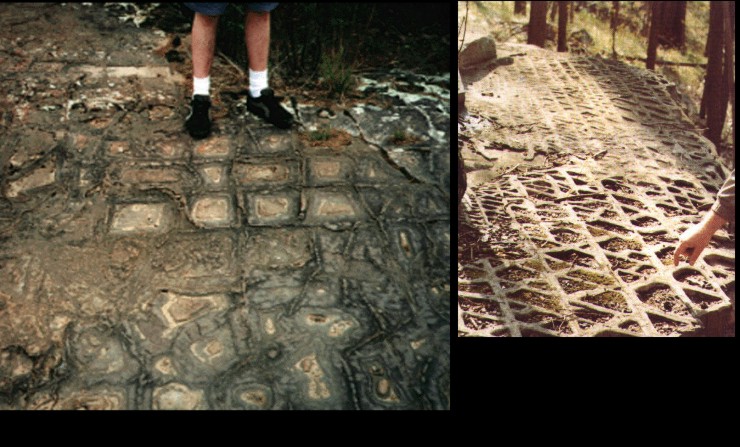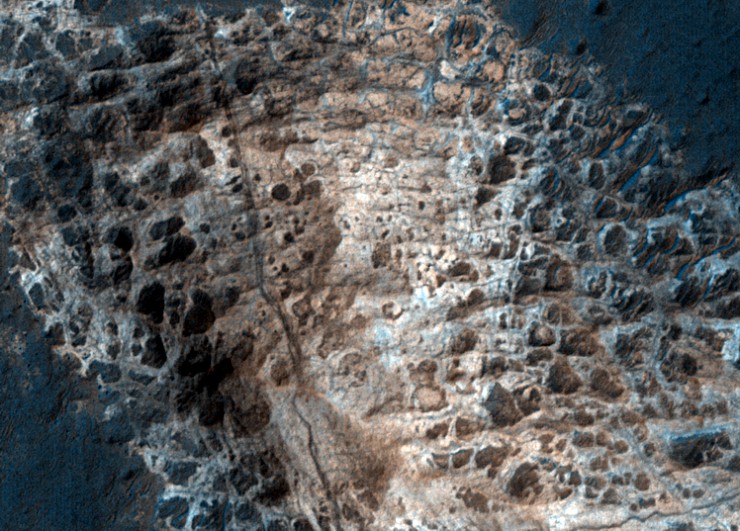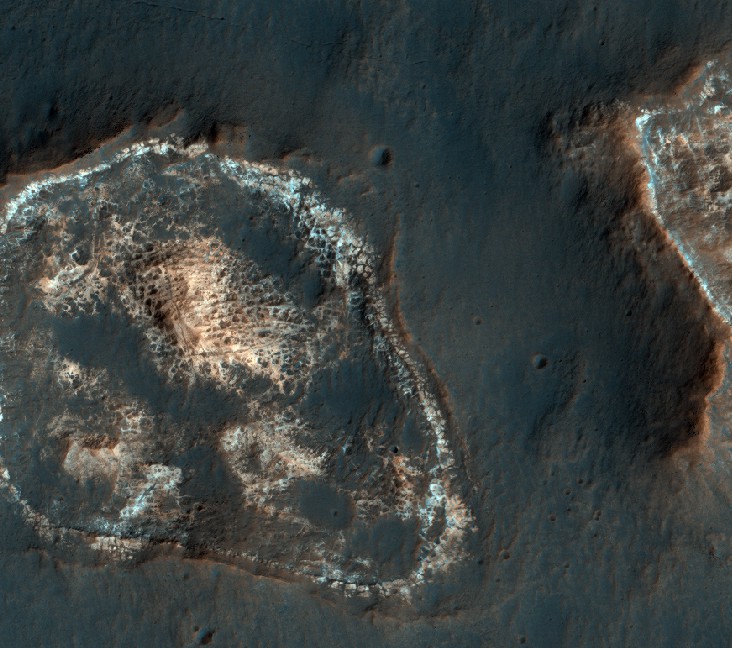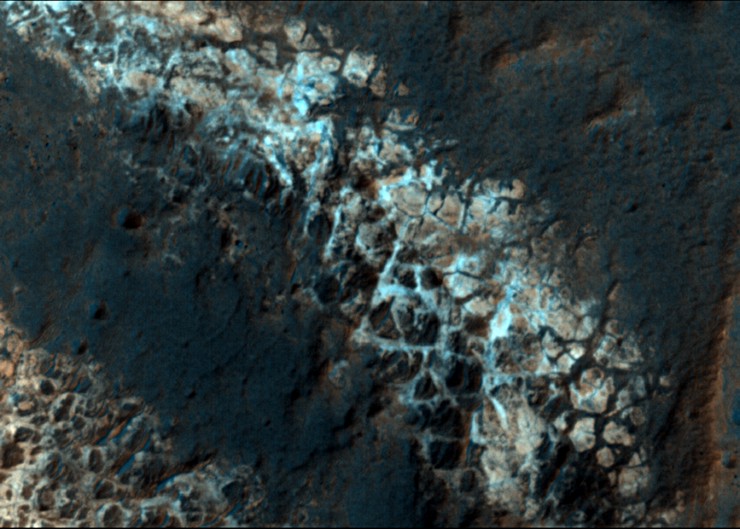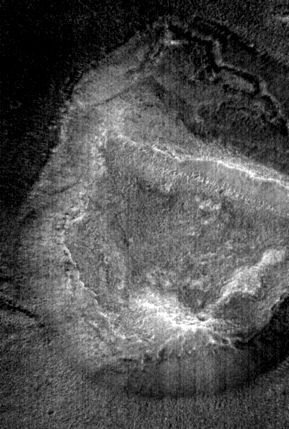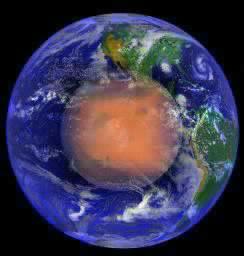
Cydonia Quest C "Fossil"
Arcologies in C Part One
C The Ariadnes Colles region lies in the southern hemisphere of Mars close to Cydonia's antipode. It is a place where several hundred feet of sediment settled, was "cemented" into rock, and which has now been almost entirely eroded away again. What has been left behind is myriad hills, mesas and "chaos blocks".
What is unusual about these residual hills is that criss-crossing grids are emerging from their soft sedimentary rock as it recedes with erosion. The cells within these grids range in size from large rooms/small houses to larger buildings. There is a very architectural and structural feel to much of this.
The geological explanation given by NASA scientists for why these hills have embedded grids is as follows.
"...The older bright rock that is now exposed from underneath exhibits raised ridges that are likely fractures that have been filled in with material. The material that filled these fractures is harder than the surrounding rock and takes longer to erode. This causes the fracture fill material to have a raised appearance in the knobs (hills)..."
This kind of process is quite common on Earth - and it can sometimes produce box-like geometric patterns of raised grids. The following illustration provides two examples. "Waffle Rock" - on the right - is so cleanly geometric that it was investigated to determine whether it was the ancient work of prehistoric humans. (Click these "stargates" for further images µµµ & µµµ). c
...But the grids on Mars are still very anomalous.
The various arms and legs in the previous examples illustrate an important point. On Earth the cells in these types of raised grids tend to be on a human scale. Extensive Google searching has failed to turn up any examples that might be seen by a satellite in Earth orbit. The cells in the grids seen from Mars orbit (at many locations) range in size from large rooms, to buildings, to city blocks - to mile wide super-cells. This discrepancy in size between natural grids on Earth and grids seen on Mars is an anomaly awaiting an explanation.
In the case of the Ariadnes Colles grids there is a second anomaly. The fracture grids on Earth are incidental to the landscape. They are found on the surfaces of rocks and cliffs. They don't actually dictate the form of their parent landscape.
Perusal of the available imagery of Ariadnes Colles reveals that it is the grids resistance to erosion that has created the region's hills. The grids are large enough and have enough three dimensional depth to dictate the form of the landscape.
c Considering the Ariadnes Colles Hills as "Fossil" Arcologies
For new readers:- Arcologies are massive (self contained) habitations that can house substantial populations. They are effectively a town or a city contained in a single building and were first proposed by the architect Paolo Soleri. An arcology can be created either by building the structure "from scratch" - or by tunnelling out a natural feature like a mountain. They are particularly suitable habitations for harsher planetary surfaces than Earth. In his 1987 book "The Monuments of Mars" Richard Hoagland proposed that enigmatic martian features imaged by the Viking Orbiter were the ruins of incredibly ancient arcologies. As more orbiters have visited Mars many more ruin-like features have been observed there. Click next "stargate" for more details. µµµ
The model being explored in this series of web pages is that millions of years ago a large colony of arcologies was buried under sediment at Ariadnes Colles. Over time erosion has exhumed what remains of these arcologies from the rock that formed around them.
In this model the grid-works are the "fossilised skeletons" of the architectural support structures of these arcologies. These architectural "skeletons" will have been crushed and distorted by the weight of the sediment that once entombed them.
The CHRISM instrument of the MRO spacecraft finds that the sediments of Ariadnes Colles contain water rich minerals. So the material of the archology "skeletons" will have undergone chemical alteration, as well as chemical bonding with the surrounding sediment. In the artificiality model the hills of Ariadnes Colles are thus concretions of arcology structure and natural sedimentary rock. Much the same thing would happen if we buried a Manhattan skyscraper in the ground and left it there for ten million years.
One interesting question that this model raises is whether the sediments that buried the proposed arcologies arrived slowly - or whether the arcologies were overwhelmed in one short cataclysmic burial. This issue will be explored later in Part 4 of this series.
c Analysis of HiRise image sweep PSP_005654_1450
Image PSP_005654_1450 taken by the Mars Reconnaissance Observer (MRO) with its HiRise camera includes some good examples of the anomalies discussed above, (µµµ).
The central strip of each HiRise image sweep collects data for a false-colour analysis of the Martian surface. In the case of PSP_005654_1450 the remarkable lattice of building sized grid cells shown below was captured in this false-colour imagery. C
C The building sized grid cells stand out well because dark sand has been captured in the hollows of some of the cells. The soft rock from which the lattice of the grid is emerging is of a lighter colour than where the material of the grid has been fully exposed. This can be seen in the higher resolution version of these features shown below in which the grid is grey in colour and the entombing rock is a sandstone colour.
Readers are advised to view these images in "full screen" mode - press the F11 key to enter "full screen" and then F11 again to return to the normal browser view. Some readers will benefit by increasing their browser "zoom" by an increment - hold down the control key (Ctrl) and press the plus key (+). To return to standard zoom hold down the control key and press the minus key (-). C
C When the HiView software (µµµ) is set to a lower resolution we find that the "fossilised" grid examined above is part of a larger feature, which is shown below. It can be seen that it is surrounded by a "rampart" that contains many other bits of grid-work. This "rampart" would actually be the outer shell of this proposed arcology. For the purposes of identification the whole of this feature will now be referred to as Ariadnes "A".
In terms of the arcology proposal, the non-geometric nature of Ariadnes A's outline suggests that a natural mesa was hollowed out to create an arcology. The interior grids may be the collapsed structure of a roof (or even a dome) that once covered the hollow, internal area. c
c The next image shows part of the rampart of Ariadnes "A" at higher resolution. C
C There are features at Cydonia - including the "Collapsed Mesa - that also appear to be natural landforms that were hollowed out and converted into arcologies. The "Collapsed Mesa" is shown below for comparison with Ariadnes "A". This is a much poorer quality Mars Global Surveyor (MGS) image, but the similarity is apparent. (Click this "stargate" for an article about the "Collapsed Mesa" at Cydonia µµµ). c
C
µ Forward to Part 2 µ Forward to Part 3 µ Forward to Part 4 µ Back to the Mars Page µ Back to Cydonia Quest Main Page
|
